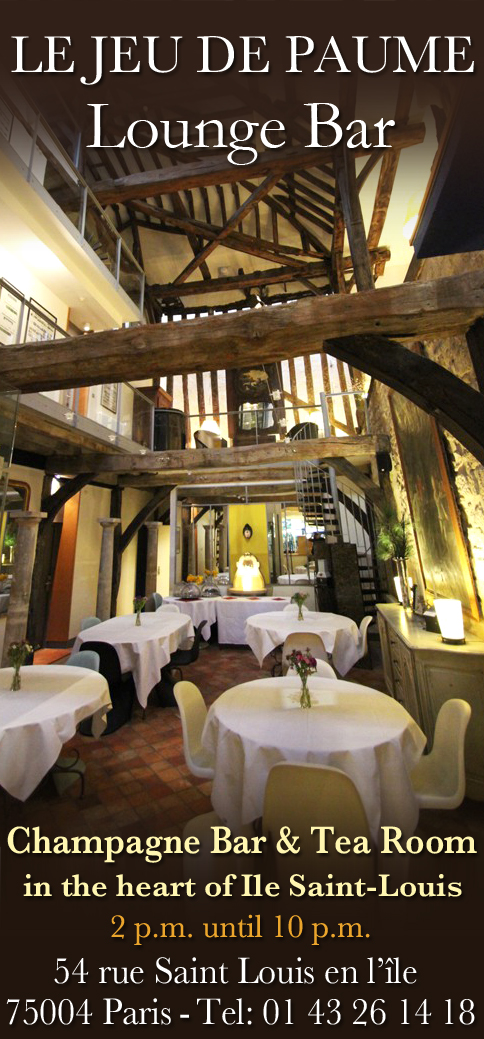 Ile Saint-Louis & Village Saint-Paul
Ile Saint-Louis & Village Saint-Paul
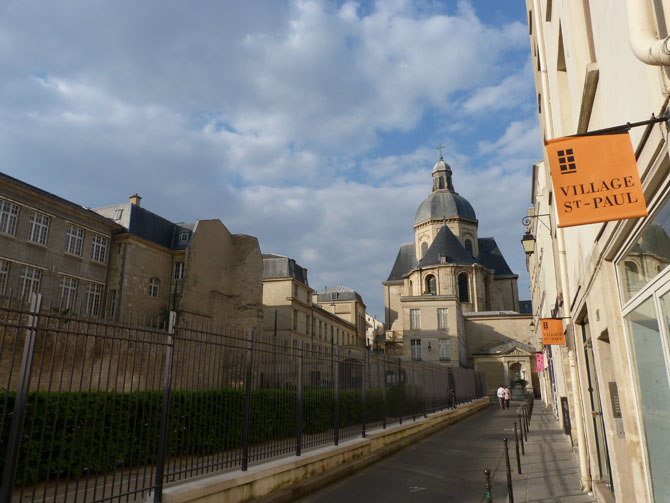
The St. Paul Village is a veritable village in the heart of the Marais, a haven of peace and tranquility. This group of buildings is accessible by a pedestrian maze of small passages under the arches, close to Saint Paul's Church, between the two bustling arteries of rue de Rivoli and that bordering the Seine.
The St. Paul Village is the ideal place to search for and discover unusual objects among the 200 antique dealers and designers present who open their doors to the public every day including Sunday. From Pieces of the Middle Ages to 70's Design, there's something for everyone. Feel free to negotiate prices and to initiate discussions with exhibitors who will be delighted to show you their treasures; perhaps you can come back with a unique piece that will find its place in your home.
Near the St. Paul Village, you will most certainly be intrigued by the presence of a long wall with towers. These are the only remains of the walls of Philippe Auguste. In the 11th and 12th century, Paris was completely surrounded by a protective enclosure whose total area was the equivalent of the first 6 districts of the city today.
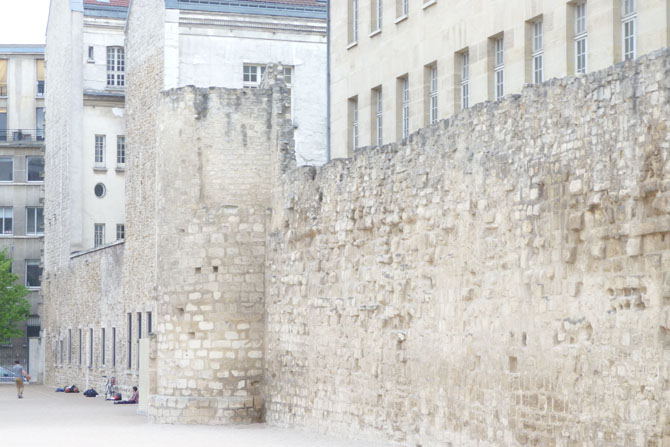
Close to the Seine, you will discover the Hôtel de Sens, former property of the archbishop of the city of Sens. Its Renaissance-inspired architecture and medieval remains draw inspiration more from the châteaux of the Loire Valley than classic Parisian residences. Today this building is home to the famous Forney library, which is dedicated to graphic art and advertising, as well as hosting temporary exhibitions on famous poster artists.
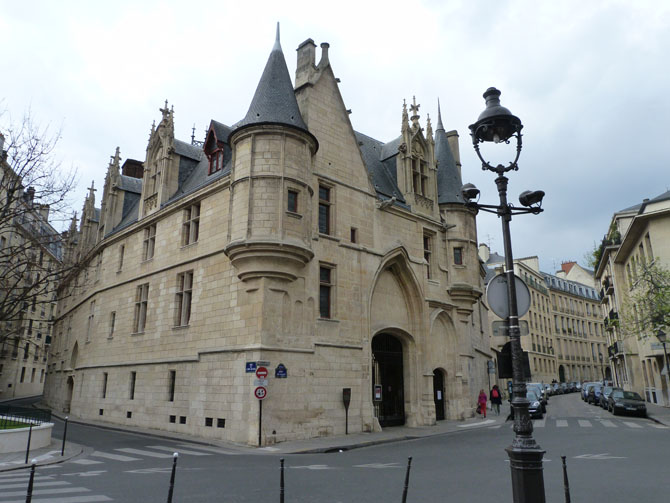
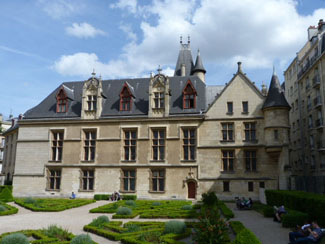
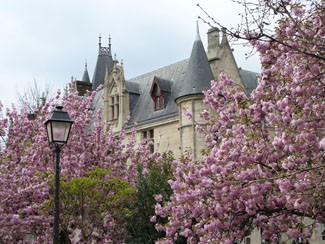
Crossing the bridge you will reach the Ile Saint Louis, which is particularly popular with Americans. It is around 20,000 euros per square meter in this area and impossible to park. The Ile Saint Louis is somewhat unaffordable but embodies a certain French lifestyle, representing the image of the City of Light. Of course, a visit to the Ile Saint Louis is not complete without tasting the famous Berthillon ice-cream, which you can find in several local shops. When warm weather arrives, much patience will be necessary to buy this famous treat. The Ile Saint Louis also offers some good restaurants, rather touristy however worth the trip, such as for example the restaurant "Mon Vieil Ami" and the lovely bistro Le Saint Regis with its terrace and view of the back of Notre-Dame.
You then continue to the Ile de la Cité and the striking Notre-Dame Cathedral, a 12th century Gothic masterpiece. Notre-Dame was heavily remodeled in the 19th century by the famous architect Viollet le Duc, and beautifully renovated again by architect Bernard Fonquernie beginning in 1992. You will also discover the memorial in remembrance of World War II victims erected at the eastern tip of the island.
Notre Dame has recently been cleaned, helping to highlight its architectural richness and the color of its stone. In the Middle Ages, the facades were painted in bright colors. These color traces have disappeared except for some still visible in the Sainte Chapelle, whose stained glass windows and decorations are beautiful. The Holy Chapel, recently restored, is located in the courthouse.
Retracing your steps towards the Marais, do not miss the fabulous flower market which brings together more than 50 florists and offering a wide selection of potted plants. From geraniums to the most delicate orchids, you'll find the friendly flora that will pleasantly decorate your balcony or home.
HOTEL DE SENS, MASTERPIECE OF XVTH CENTURY ARCHITECTURE, RESIDENCE OF THE QUEEN MARGOT.
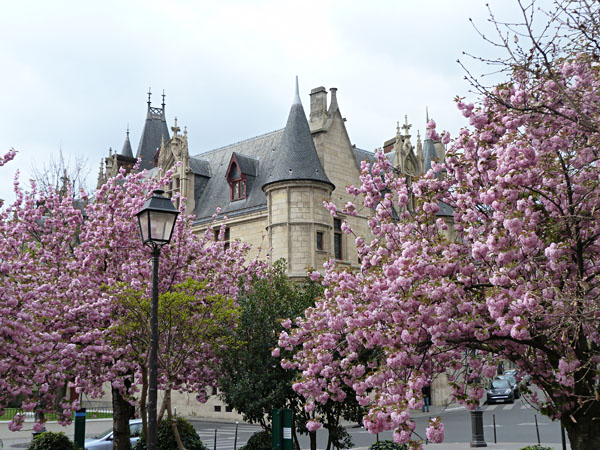
A few steps from the surrounding walls of Philippe Auguste, in the direction of the Seine river, do not miss the Hotel de Sens, located in rue du Figuier. This street was originally lined with houses dating from the 16th to the 18th century, however they were torn down in the 20th century because of their unsanitary conditions. In the 1950s stone buildings inspired by classical references were built, as well as low-rent housing. Rue du Figuier illustrates how the restructuring of the Marais was envisioned in the 20th century. The Hotel de Sens, which now houses the Forney library, is nevertheless one of the few examples of civil Parisian architecture from the Middle Ages, besides the Hotel de Cluny. The Hotel de Sens therefore deserves a visit during your discovery of the Marais. Looking at the facade of this building which has undergone many transformations in its history, you will come across an architecture retaining its military aspect with two sets of buildings, turrets and bay windows. The turrets allowed the monitoring of the surrounding streets and ensure the safety of the building. In the courtyard, the tour includes an interesting spiral staircase. A chapel, now destroyed, projected into the courtyard. The main building, today turned into administrative offices, housed a common area on one side and on the other an area for carriages.
.jpg) Main façade of the Hôtel de Sens
Main façade of the Hôtel de Sens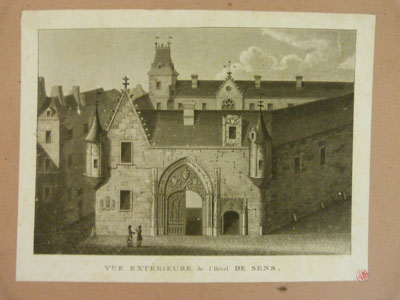
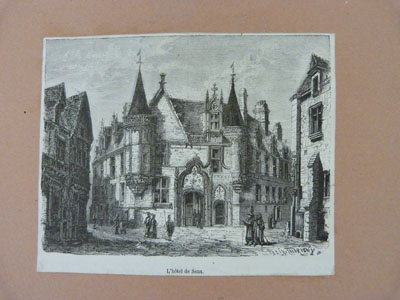
The origin of the Hotel de Sens dates back to the days when Paris was a dependent of the bishopric Archdiocese of Sens, until 1622. When the archbishops of Sens were called to Paris, they had to reside in a home worthy of their rank. It is Tristan de Salazar, Archbishop of Sens from 1474-1519, that we can thank for the construction of the prestigious Hotel de Sens, in accordance with his taste for magnificence. The tympanum of the two doors of the Hotel de Sens include images of Tristan de Salazar's weapons as well as the city of Sens.
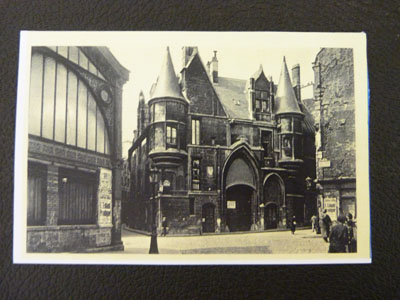
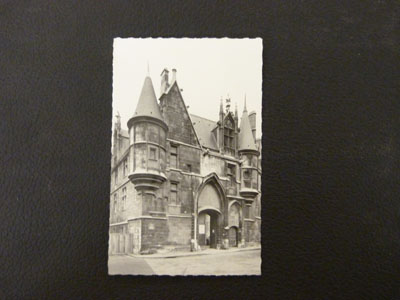
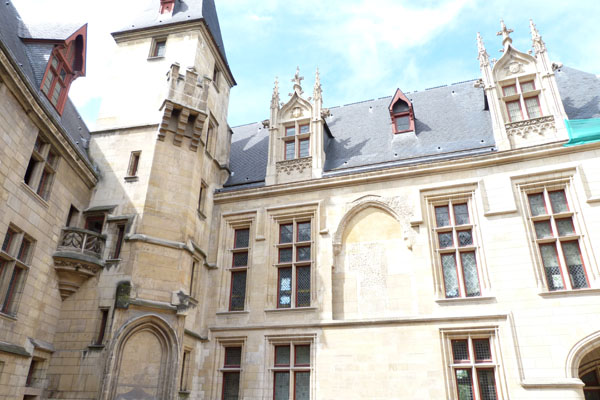
This prelate protected the arts. If today the hotel is home to the Forney Library, it is perhaps in memory of this illustrious ancestor. The Hotel de Sens had several famous guests, the most ledgendary being Queen Marguerite de Valois, who stayed there quite some time. Queen Margaret – known also as Queen Margot and from Alexandre Dumas' novel - left the hotel after her lover was killed there by Varmont, a young nobleman, on April 5, 1606. Varmont was beheaded at the scene of the crime two days later in presence of the queen.
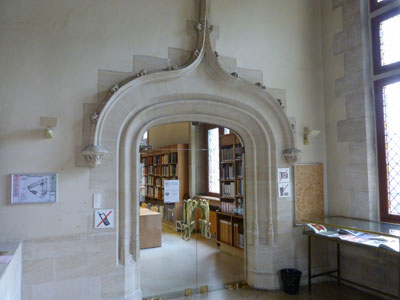
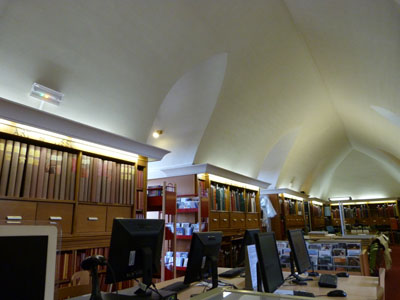
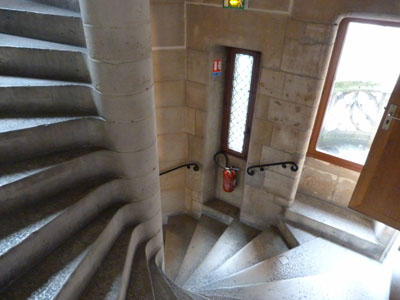
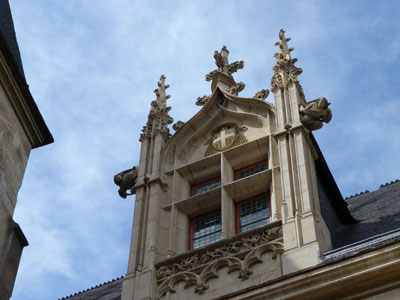
The Hotel de Sens lost its importance from 1622, when Paris was made Archdiocese. From that date, the hotel was leased to the Lyon coaches and housed various industrial and artisanal activities. Bought in 1911 by the city of Paris, the Hotel de Sens has since 1961 housed the Forney library, specializing in art and technology. Exhibitions are held regularly there. The Hotel de Sens is a must for anyone wanting to educate themselves with documents bequeathed by Aimé-Samuel Ferney in the 19th century and that make up the unique and valuable base of this vast collection. 230,000 books, posters and magazines available in all languages including English, Chinese, Italian, and German are entirely devoted to the decorative arts, advertising and crafts.
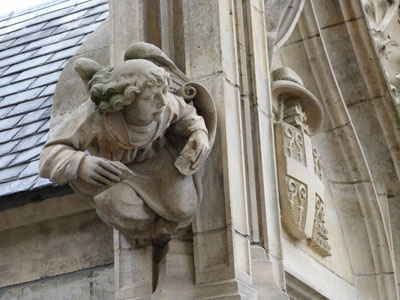
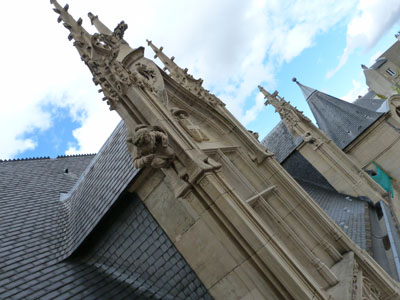
You will notice high on the main facade a cannonball stuck in the stone. It is one of the many cannonballs that were fired at the hotel, then the symbol of religion, during the revolution of 1830. It has been deliberately left in place to commemorate this event, which almost completely destroyed the building.
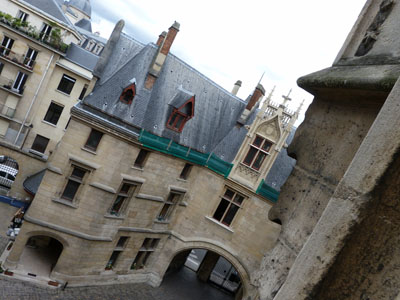
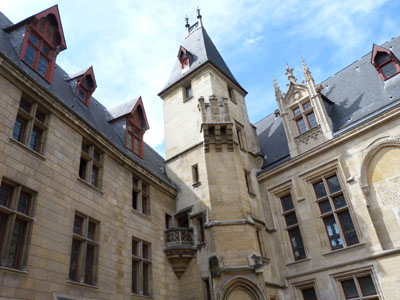
Hotel de Sens – Bibliothèque Forney
1, rue du Figuier 75004
Tel : 01 42 78 14 60
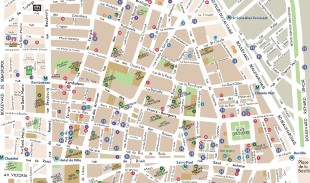


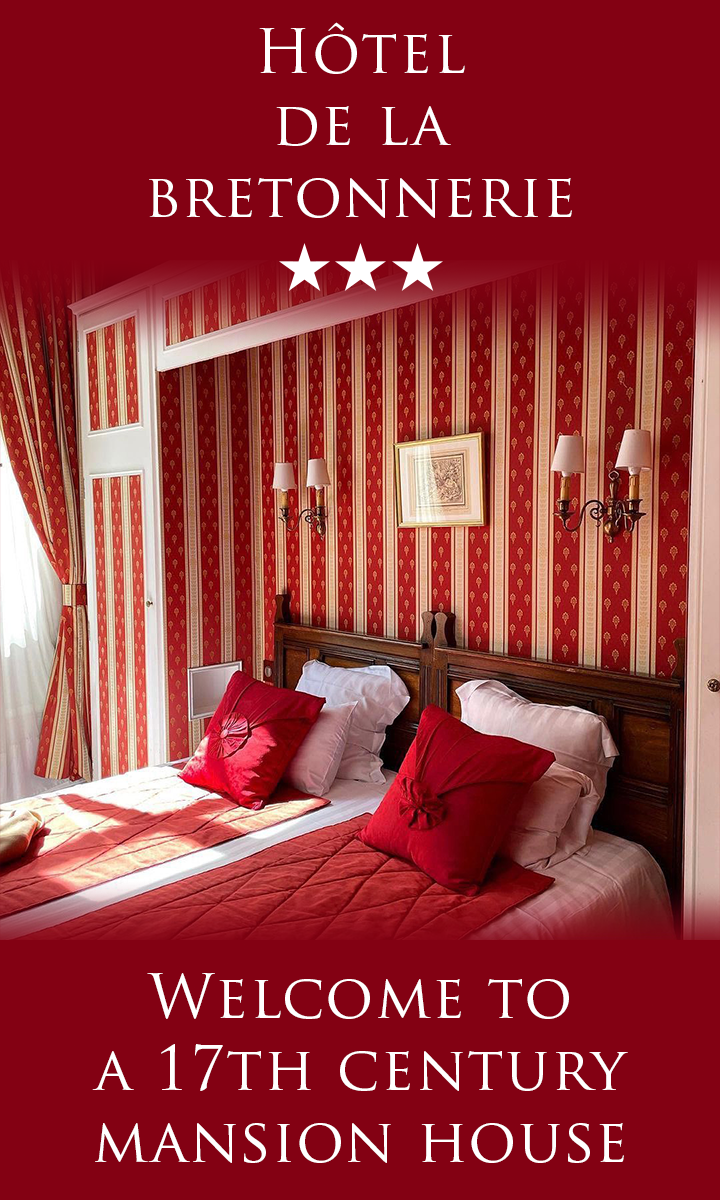
.jpg)
